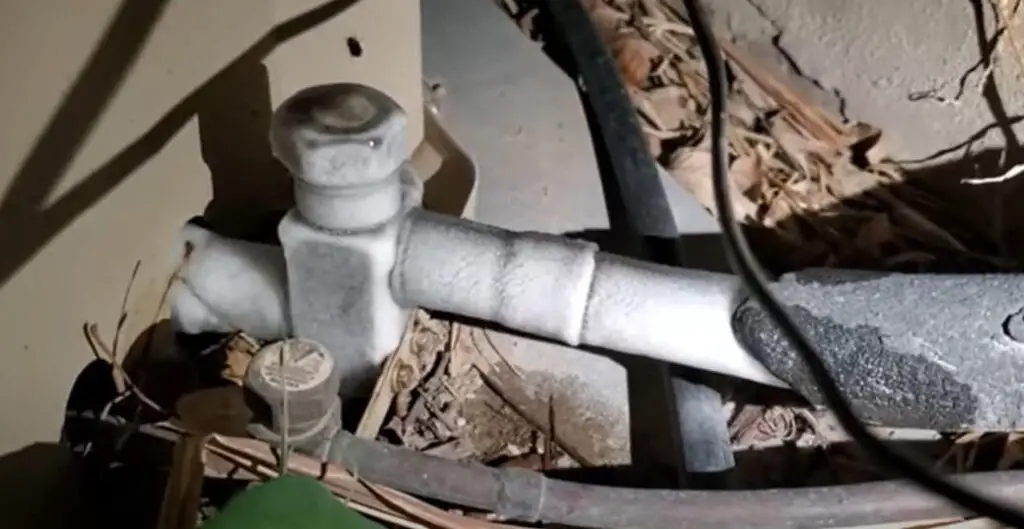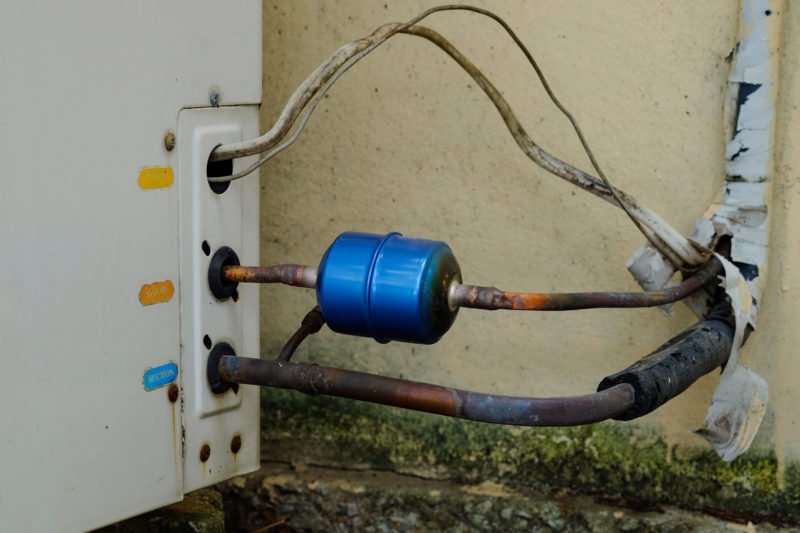Advice on Unfreezing a Frozen AC Pipe - Reinstating Proper Operation
Advice on Unfreezing a Frozen AC Pipe - Reinstating Proper Operation
Blog Article
This article which follows on the subject of Why Is Ice On My Outside Air Conditione is truly attention-grabbing. Check it out yourself and decide what you think of it.

Intro
Uncovering that your a/c pipeline is iced up can be worrying, specifically throughout hot summer months when you depend on your air conditioning unit the most. Understanding what to do in such a scenario is vital to avoid further damages to your cooling system and guarantee your comfort inside.
Comprehending the Causes
Several aspects can contribute to the cold of an a/c pipeline. Comprehending these causes can aid you deal with the issue effectively.
Lack of Airflow
One common source of a frozen AC pipeline is inadequate air flow. When the air movement over the evaporator coil is limited, it can create the coil to go down below freezing temperature, leading to ice development on the pipe.
Reduced Refrigerant Levels
Insufficient cooling agent levels in your air conditioner system can likewise result in a frozen pipe. Reduced refrigerant degrees can cause the stress in the system to drop, bring about the freezing of moisture on the evaporator coil.
Cold Weather Conditions
In chillier environments, freezing temperature levels outside can contribute to the cold of AC pipelines. If your air conditioner system is not effectively insulated or if there are leakages in the ductwork, cool air can infiltrate the system, creating the pipe to freeze.
Dirty Air Filters
Unclean or clogged up air filters can limit air flow in your air conditioner system, leading to numerous problems, including an icy pipeline. It's necessary to replace or cleanse your air filters regularly to ensure proper air flow and prevent ice buildup.
Indicators of a Frozen AC Pipe
Acknowledging the indications of a frozen AC pipe is vital for prompt action.
Lowered Airflow
If you see a significant reduction in air flow from your vents, it might indicate an icy pipeline.
Ice Buildup on the Pipe
Visible ice build-up on the cooling agent line or the evaporator coil is a clear indicator of a frozen a/c pipeline.
Weird Sounds from the Unit
Unusual sounds, such as hissing or bubbling, originating from your AC unit can signal that there's ice present on the pipe.
Immediate Actions to Take
When faced with a frozen air conditioning pipeline, it's vital to act promptly to stop more damages to your air conditioning system.
Switching off the a/c
The primary step is to turn off your ac unit to stop the system from running and aggravating the issue.
Looking for Blockages
Examine the location around the indoor system for any obstructions that may be obstructing air flow, such as furniture or drapes.
Defrosting the Pipe
You can use gentle approaches like placing towels taken in cozy water around the frozen pipe to help thaw it slowly.
Safety nets
Taking safety nets can help stay clear of future events of a frozen AC pipe.
Routine Maintenance Checks
Arrange regular upkeep get in touch with a professional HVAC specialist to make certain that your a/c system is running efficiently.
Changing Air Filters
Frequently replace or cleanse your air filters to avoid air movement restrictions and preserve ideal performance.
Protecting Exposed Pipes
If your a/c pipelines are exposed to cool temperature levels, take into consideration insulating them to stop freezing throughout winter months.
Looking For Professional Help
If DIY techniques fail to resolve the issue or if you're not sure about just how to proceed, it's ideal to seek help from a qualified HVAC service technician.
When DIY Methods Fail
If your attempts to thaw the pipeline or address other concerns are not successful, it's time to hire an expert.
Importance of Hiring a Professional HVAC Technician
A certified HVAC service technician has the competence and devices required to detect and repair problems with your AC system securely and properly.
Conclusion
Handling an icy air conditioning pipe can be a discouraging experience, but recognizing how to respond can aid minimize damage and bring back comfort to your home. By recognizing the causes, acknowledging the indicators, and taking prompt activity, you can effectively address the issue and prevent future incidents.
G UP? HOW TO FIX IT?
It happens all over America. And the rest of the world probably. It’s the hottest day ever and for some darn reason your AC isn’t cooling the house. You fiddle with the thermostat to try and fix the problem. Nada. All you can do now is go outside and check the AC unit. You make your way there and find your air conditioner unit is frozen! But how?
In this post we’ll cover how you can tell that your air conditioner has frozen (other than the obvious reasons), what could have caused the freeze, and some of the things you can do about your AC freezing up. And if you have a frozen heat pump condenser, read our blog about it to learn what to do! But remember, it is always best to avoid your AC freezing up with an AC tune up. And if you are moving into a home, it's critical to get HVAC inspection so that you are aware of an AC problems before you move in.
Keep reading and you may be able to fix the frozen AC yourself. If you can’t, call an HVAC specialist. If you live in Maryland, call SuperTech HVAC for AC repair. We’ll take care of it.
How Does An Air Conditioning Unit Work?
How you probably imagine an AC works is wrong. Contrary to popular belief, an AC system does not inject cool air into a building. Instead, it removes the heat from inside and transfers it outside. Cool huh? (Pun intended).There are 4 major components among the 3 stations of an air conditioning system: the evaporator coil, the compressor, the condenser, and the refrigerant – a special chemical that links everything together through a closed loop system.
Station 1:
Warm indoor air is sucked into the return vent, through a filter, and blows over the evaporator coil. The heat is absorbed into the cold refrigerant, turning it from liquid to gas. The air, which is now cool, is blown back into the home to areas that your thermostat, i.e. you, has decided.
Station 2:
The refrigerant makes its way outside the house to the compressor, which squeezes the warm refrigerant, raising its gaseous temperature even more.
Station 3:
When the super hot vapor refrigerant reaches the condenser, the last step, the heat is expelled and absorbed into the outdoor air. The refrigerant instantly cools, which changes it from gas back to liquid form. The cold liquid refrigerant is now ready to return to station 1 and repeat the process.
Is Your AC Freezing Up? Here Are The Signs:
As you may have guessed, your air conditioner unit freezing up on a hot day is not normal.
If this happens, there's no need to panic. Often the issue can be solved with a little troubleshooting. If the AC unit is left frozen for too long however, you may find yourself with a bigger problem.
First things first, how do you know your AC is frozen?
Well, the obvious sign is the ice on your refrigerant line-set pipe. Simply check between your outdoor AC unit and your home's exterior wall to see whether your AC line frozen.
You might also have a frozen evaporator coil. This one's not as easy to check. You'll need to open a panel on the indoor unit to inspect. Don't do this unless you're handy. If you aren't, call an HVAC pro like SuperTech HVAC or you may damage something in the process.

As an enthusiastic reader on How can I fix an air conditioner’s frozen pipe?, I thought sharing that excerpt was beneficial. For those who appreciated our blog post please make sure you remember to share it. Thanks a bunch for your time. Please come visit our website back soon.
Click Here Report this page